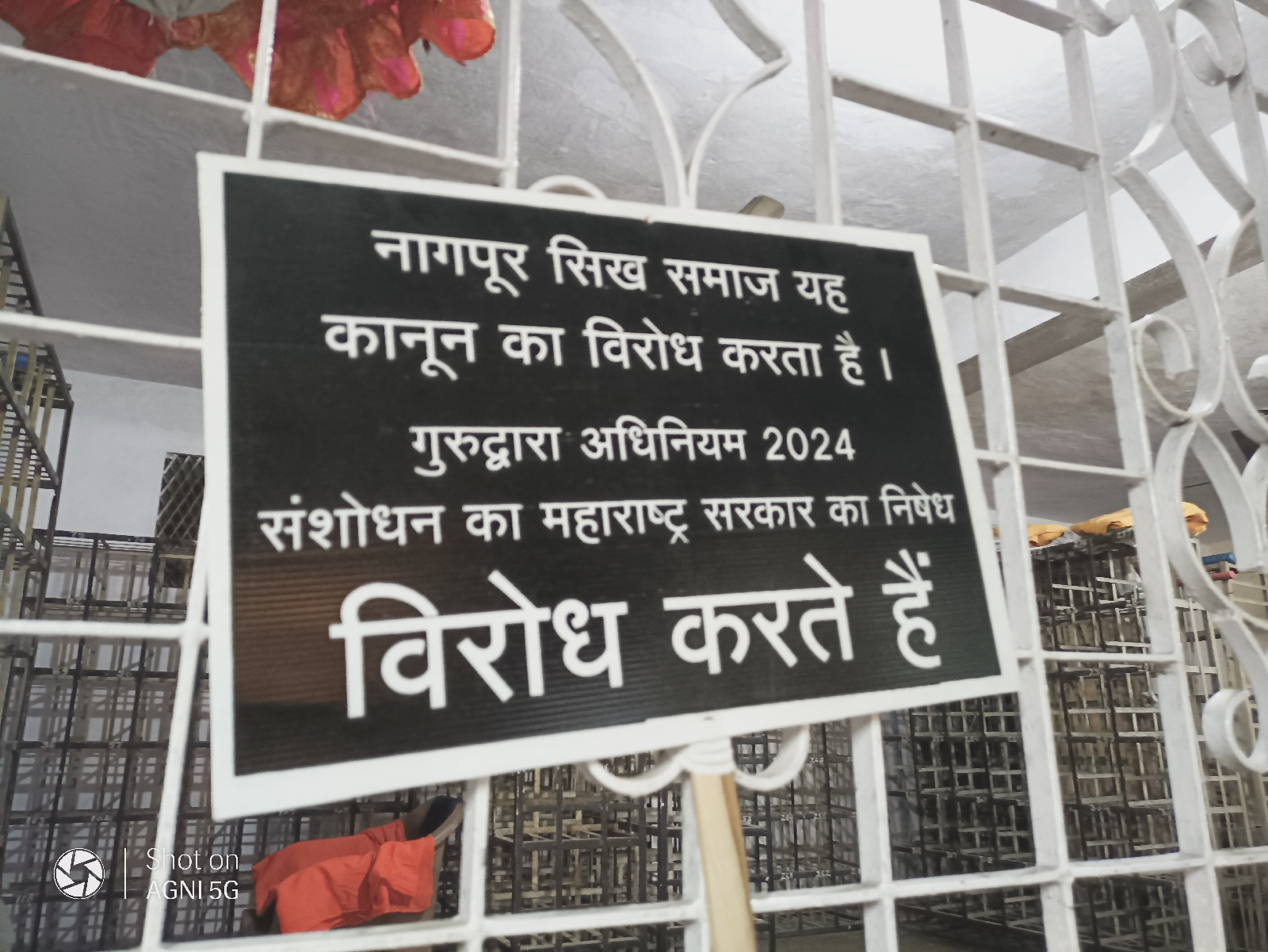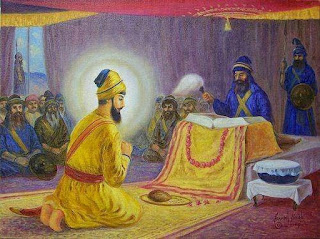Who is a Sikh? Sikh Identity and Keeping Hair
Who is a Sikh?
This question was once raised in the Indian
Supreme Court when one girl, who wanted to take admission in a Sikh minority
run educational institution was denied on the basis of the question of not
keeping full Sikhi Swarup (or outward form).
The Indian Supreme Court in a judgement where Justice Jagdish Singh Khehar was a part stated that:
“…retaining hair unshorn is a fundamental tenet of the Sikh religion and a Sikh is the one who kept unshorn hair and does not trim beard or plucked eyebrows.”
He even went further to state that:
“Not only that, under the ‘Sikh rehat-maryada’ a Sikh is not permitted to dishonour hair, or even to harbour any antipathy to hair of the head with which a child is born. Dyeing one’s hair is considered as an act of dishonouring hair. Transgression of these norms is treated as ‘tabooed practice’, which is condonable only after suffering a chastisement prescribed,”
So, does that mean a Sindhi, who does not keep unshorn hair but who prays before the Guru Granth Sahib and have maintained Gurudwaras in parts of India which are remote and away from the chunk of 'Sikh' population is not a Sikh? Or a person who believes in the tenets of Sikhism but does not keep unshorn hair is not a Sikh?
Well, we must look at the context of why the Sikh definition was made during the time of the Gurudwaras Act 1925. The Sikh Gurudwaras before the Saka Nankana was under the Mahants who did not follow the Sikh code and were syncretic in belief. The hereditary control of Gurudwaras by Brahmanical Mahants had invited all forms of evils in the Gurudwaras which included exploitation of women, ill maintenance and no records of the receipts and expenditures.
The separate identity of the Sikhs goes all the way back to Guru Gobind Singh who wanted to give an identity to Sikhs by starting Amrit Pahul ceremony.
But is it relevant today? As many people tell themselves when they opt for cutting their hair. The answer is a blaring Yes!
And with the current times, it is needed all the more. Sikhism must not become like Buddhism which started and prospered in India, spread across the world, and then became extremely limited in population in India. For that, the most crucial step is the prevention of any attempt that merges Sikhism with mainstream Hinduism. Sikhism is not a sect of Hinduism, but a separate and individual religion.
The Shiromani Gurudwara Prabandhak Committee, or the central body of the Sikh shrines, prescribed definition of Sikh is as follows:
'A Sikh is defined as any person, male or
female, who faithfully:
believes in the existence of One Eternal God
follows the teachings of, and accepts as their only Spiritual guides, the Guru
Granth Sahib and the ten human Gurus
believes in the baptism (Amrit Sanchar), as promoted by the tenth Guru'
In this context, our prime belief is Monotheism. This belief is what separates and distinguishes Sikhs from any form of mixing with local and folk worship methods. This also separates Sikhs from the Hindu Brahmanical way of rituals, polytheism and caste based division of the society.
There are attempts by some elements which try to portray a picture that Sikhs have Hindu common ancestors, Sikh religion texts have mention of Hindu Gods and the best of all the Guru Gobind Singh worshipped a Hindu Goddess. This is farthest from the truth and is a biased opinion.
As far as ancestry is concerned, all humans had a common ancestor to start with. All Muslims would have been some other religion before advent of Islam and all Christians would have been something else before the advent of Christianity. In the same light, Sikhs before becoming Sikhs, as after Guru Gobind Singh defined the Sikh code, would be from all religions and social backgrounds. He created a egalitarian religion believing in One God which in itself challenges the basis of the Hindu Polytheism, Brahmanical rituals and Hindu Caste based system.
On the issue of Sindhis believing in Guru
Granth Sahib and praying in Gurudwaras, there is absolutely no denying that Sindhis
are ardent believers in Guru Granth Sahib, Guru Nanak and Sikhism in general.
There has been no distinction and the line either never existed or has been very blur. Once from a train from Ahmedabad to Delhi I
met a Sindhi gentleman who told me that there have grown differences between
Sindhis and Sikhs. He told me how the Guru Granth Sahib birs were
removed from some Sindhi ‘darbars’ in Central India. Well, this must be
given a context to be more specific. Sindhi Darbars are temples run by a Sindhi
religious person called ‘Maharaj ji’ in some areas. From our trip to a far of
South Indian place, we learnt a few new things. In this small South Indian city,
where the author stayed for two years, there was no Gurudwara and just two Sikhs
families. The only place where Sikhs could worship was the Sindhi Darbar due the
presence of Guru Granth Sahib there. The Guru Granth Sahib was kept in the same
room as many idols and there were people who would sit in this space without
their head covered at some time. The maryada or the protocol of keeping
Guru Granth Sahib was not followed, which involved closing the pages at night,
packing it in a cloth-sheet and then opening the Guru Granth Sahib the next morning
along with recital of hymns. This is a serious topic as there is a protocol
of keeping Guru Granth Sahib which the Shiromani Gurudwara Prabandhak Committe has prescribed. Apart from this, there was also people who would
come to ‘Maharaj ji’ in the presence of Guru Granth Sahib and touch his feet. This
is something that is usually not considered well in the presence of Guru Granth
Sahib. There is an additional concern that is to do with the transformation of
the Sindhi Darbars itself which must be mentioned. I remember one Sindhi Darbar
in Delhi when I was a small kid. The inside of it was nothing but a big hall
with just four holy books kept in four separate pedestals. There was no idol
and no presence of any imagery. The same Darbar was transformed into a temple
with idols of multiple Gods when I grew up. This has been a trend, where Sindhi
culture which was based on less rituals and ‘word of God’ may have seen a
transformation into some increase in idol worship. This view and the choices made by the Sindhis is respected as a choice made by them, but
the transformation must be highlighted. But, having said all of it, Sikhs must
be incredibly grateful to Sindhis all over the country for keeping the word of
Guru Nanak alive throughout the country and across the world. On a trip to Bhavnagar,
on a visit to a Gurudwara, all that was seen was Sindhis doing Sewa or voluntary
service and a meagre 4 Sikhs that were present in the Gurudwara. Same was the
case with Ahmedabad and the multiple Sindhis who were doing service. This was
also the case in Dera Sahib Lahore and Nankana Sahib Pakistan where the Sindhi Hindus
were performing service and their belief in Guru Nanak and Guru Granth Sahib
surpasses that of many people I may know. I remember Sindhi old ladies doing
Sukhmani Sahib recitals and the Gurbani being typed in Sindhi language in the Urdu
script. The older Sindhi people who read Sindhi in the Urdu Script are now also
exceedingly rare. The latest of this transformation was the Urdu language Sindhi
Darbar board that was removed from a Sindhi Darbar in Delhi and only the Hindi
one was retained. This was the case of the association of language with religion
and how one was accepted over the other. This may also be in line with the
current geopolitical reality of India. I also very clearly remember as a kid seeing a kirtani or a hymn singer, wearing a red cap who later took Amrit Paul and accepted 'Sikhism' in the way it is prescribed.
Second is the issue of Hindu Gods in Guru Granth Sahib. Well, the Guru Granth Sahib was a collection of good thoughts present in the time. Without any form of plagiarism of thought and ideas, the Sikh Gurus who compiled the Guru Granth Sahib and it's earlier versions were giving full credit and full audience as-it-is to different saints who came from various religions and folds. The concept of 'Nirgun' or formless and 'Sargun' or having form is the two types of Bhakti or worship which are given a respectful platform in the Guru Granth Sahib. But the ultimate Gurmat only uses these as a pathway to monotheistic thought. So when a Hindu God is being mentioned, it has been defined as Formless God and not as the Hindu God itself. That is the only way the Guru Granth Sahib could be inclusive to Kabir or Farid who was talking about the formless God and Namdev who was referring to Hindu Gods. Gurmat, or the Sikh way of thought points both these paths towards one formless God, a reinforcement of the Monotheistic value of Sikhism.
Third is the way Guru Gobind Singh’s Gurbani may be selectively misquoted by a few to be worshipping Hindu Gods and writing about them. Well, on reading the expanse of Guru Gobind Singh's Bani, it is clear that he believed in only one formless God. But at the same time, he, as a temporal leader and a learned scholar acknowledged the existing belief systems and wrote his treatise on these. When he writes about Hindu Gods and Goddesses, he is referring to the prevalent belief systems in order to be relevant in teaching to the people. But it does not mean his own worship was to these Gods and Goddesses at all.
His belief on One formless God and shunning of the idol worship and ancestor grave worship is mentioned in the Gurbani which every Sikhs reads every morning in Twav Prasad Savaiye:
There are other common schools of thoughts including some of my own relatives which state that the Sikh identity was needed as a separate army was the need of a particular time and is not relevant is today's time and fashion.
Well, this is a self-immolation of Sikhism by some believers of Sikhism itself and this must be countered vehemently. All religions remain as religions when they have an identity. There are others who may counter that by saying that Guru Nanak visualised an end of all rituals and keeping the Sikh identity is a repetition if what Guru Nanak shunned.
Well, the answer to this is amazingly simple. It is found in the lives and contributions of Sixth Guru Hargobind Singh and Tenth Guru Gobind Singh. Guru Hargobind Singh declared Sikhs as a temporally sovereign community and Guru Gobind Singh created an identity by creating a community of people free from social divisions and into the fold of Khalsa through the Amrit Paul as mentioned before. This Khalsa is what has been recognised repeatedly as the true form of Sikhs, with references to Tat Khalsa and differences from Khulasa that may have been nomenclatures of the past. Today, there may be three such categories with an ‘Amritdhari’ Sikh who has taken the Amrit Paul. The second being A Sikh having unshorn hair but not having taken Amrit Paul and the third being Sehajdhari as we will see below.
People may admire Sikhism, it's Guru and it's teachings. As a reminder, gurudwaras, especially the Darbar Sahib at Amritsar has four gates to symbolise all religions and castes are included. But people may call themselves Sikhs only if they follow the tenets of Sikhism both inwardly and outwardly. The outwards tenets include abstaining from tobacco, adultery and intoxicants. The outwards tenets also include having unshorn hair. The inward tenets include a constant and deliberate abstaining from the evils like excessive sexual desire, excessive anger, excessive greed, excessive attachment and excessive pride. For those in the path towards following the full tenets, a Sehajdhari Sikh is an easy way of referring.
People may also say that it is more important to imbibe the inward teachings and that outward tenets are not essential or are secondary. The answer to this lies in the fact that our human experience is not just an abstraction. A simple example is that one cannot love a person by simply having a feeling of love only. The physical reality of the person in flesh and blood is also needed. Same is the answer of the inward vs outward debate. The outward tenets are the path of entry into the fold of inward tenets. Following just inward tenets and not having outward symbolic identity is a sure shot path to dilution and a welcome entry for other religious thoughts to first trespass through common abstractions and then ultimately make a population follow the outward symbol of a third religion. This will mean the end of Sikhism as we know today.
Another important thought is keeping the Sikh Gurudwaras free from excessive rituals, esp. the ones that Sikhism championed against. The importance to days like Tuesdays and Mondays is purely non-Sikh way of thinking. The keeping of 'photographs' of Gurus in Gurudwaras and then bowing head to it is also a form of idol worship. This can be taken even further by the overt focus of ritualistic cleaning of Gurudwaras, overt expenditure in the clothing and periphery of Guru Granth Sahib which relegates Guru Granth Sahib to the same value as a temple would give to an idol.
As a recommendation, the correct architecture of Gurudwaras is a hall type space with Guru Granth Sahib at the centre, accessible to all, without any boundary fence or gate towards the Guru Granth Sahib. There must be a stage for Kirtan and a pulpit to share Sikhs thoughts so that Sikhism becomes a religion of thoughts and ideas and does not become a religion of rituals. This type of architecture was promoted during the Singh Sabha Movement and prevents any other living human, idol or painting/picture to take a place higher than Guru Granth Sahib.
Another suggestion is that Sikh marriages should be free from caste
considerations and the status of families in terms of financial and educational
status accompanied by belief in Sikhism can be alternates to the caste based
system that still plagues the Sikh society. The proof of this current scenario lies in the
matrimonial section of Sikh marriages in newspapers. This practice will push Sikhism into the Brahmanical caste system which is a sure shot recipe for the downfall of the Sikh identity that was envisioned by Guru Gobind Singh.
Sikhs who are 'Sikh' as per definition should
also be the epitome of tolerance be ambassadors of preaching. They must not be under any
mission to prove themselves right and others, who may not be fully under the definition of a 'Sikh' as
someone lower or lesser in belief towards Guru Granth Sahib. Every person who walks one step towards Sikhism and maintenance of the outward tenets must be given a
red carpet by practicing Sikhs. This also includes accepting and
facilitating people who may have gone astray and done away with unshorn hair.
Practising Sikhs must alwasy meditate on the fact that the inward tenets along with outward tenets are both two sides of the same
coin. Just any one of them is not enough.
In the personal belief of the author, there is also a feeling of polarisation, that may be spread through select media outlets. The polarisation is stated that either one may be seen as a fully unshorn haired person and be deemed as a separatist. On the other hand, if one trims the beard while retaining the turban, one may not be deemed as an extremist/orthodox or separatist and may be deemed as moderate. This is a false way of thinking and will only push towards the dilution of the Sikh identity. Sikhs with unshorn hair must focus on taking regular activities, must educate themselves and be role models for other Sikhs to follow so that being unshorn with full Sikh identity becomes a norm rather than being an outlier. The polarisation should not be that anyone with unshorn hair is categorised as someone hyper orthodox and even maybe painted as affiliated to separatists etc.
Sikhism is an independent and new religion and
not a sect of Hinduism or any other religion. The reinforcement of this idea
will ensure the survival of Sikh thought. Without an outward form, in a few
generations, the good inward teachings will be diluted and there shall be no
representation of these values in the form of people propagating these. The absence of the people with outward tenets will mean and end of propagation of inward tenets by people who champion these.
Remember what Guru Gobind Singh said:
Jab Lag Khalsa Rahe Niara, Tab Lag Tej Dioon Mein Sara Jab Eh Gaye Bipran Ki Reet, Mein Na Karoon In Ki Parteet"
This means as long as the Khalsa remains independent (and follow only one path of the Gurus and follow the teaching of Guru Granth Sahib) Guru Gobind Singh Ji will always be with the Khalsa.
But if the Khalsa starts following Bipran Ki Reet then Guru Ji will not help the Khalsa. (Bipran ki reet means the Hindu Brahminical ritualistic living)
End Note: Sikhs are not Hindus and it is not a goal that must be envisioned. Sikh identity as a separate religion will be the sure shot way of keeping the teachings of the Gurus alive.
You may also watch the video below which talks about the Sikh Identity and its evolution:








Comments
Post a Comment
Please share your view